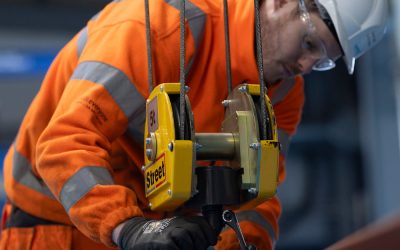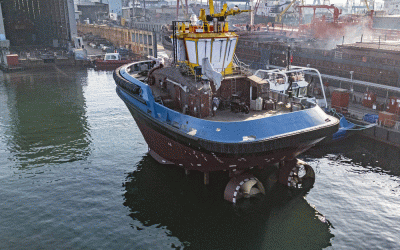Much-maligned graphene could yet prove an effective shipbuilding solution
Graphene may be relatively unpopular, but is it simply misunderstood? Stevie Knight finds out from a small band of marine adopters that knowing how and where to apply can make all the difference between success and failure
Most people have heard that graphene is “200 times stronger than steel”, but early applications didn’t live up to the hype, writes Stevie Knight. However, among other characteristics, graphene can confer physical resilience and anticorrosive effects on otherwise mundane materials. One of the largest challenges centres on application: how these coatings are laid down can make or break the case, according to Sam Whitehead of Applied Graphene Materials. “Dispersion quality makes a big difference,” he underlines. “Initially, most graphene companies took the simple route of adding graphene to resins in powder form.” The result was that the fine graphene sheets just formed ‘agglomerates’, becoming “a lump of carbon mish-mash”.
Over the last few years, there’s been a considerable effort toward ‘functionalisation’. That means incorporating the nanomaterial into a pre-dispersed liquid, which can then be mixed into a coating that will retain its structure. It’s similar to (but not as easy as) working out how to get a washing machine to give you an ironed, folded bedsheet rather than a wet tangle. Other details also have an impact. “If you have a clear resin base, graphene can have a substantial positive effect on mechanical properties,” says Whitehead. “But in a pigmented system [ie, colour paint] the effect is reduced and not as dramatic as sometimes has been claimed”: mostly because the pigmentation particles “simply get in the way” of the graphene.
It’s not just how you apply it; another important factor is knowing where to apply it. Graphene is primarily used in coatings to improve barrier properties, but it can be used in coatings aiming to provide ‘impermeable’ characteristics, such as anticorrosion and/or chemical resistance. “One exciting application is the use of a graphene barrier in conjunction with a cathodic base coat,” Whitehead says. The graphene reduces the water and oxygen flowing through the film and reaching the layer below, decreasing the oxidation rate and significantly extending its lifetime.There are also possibilities for applications inside the hull: making containers impermeable could boost the take-up of hydrogen-powered vessels, for example.
Composite structures could also get a boost from graphene. Interestingly, graphene-enhanced composites are making commercial headway in other sectors. Briggs Automotive Company (BAC) has released the BAC Mono R, which has used graphene to reduce the weight of the car’s bodywork by 22%. In fact, the use of graphene helped to pare back two complete carbon layers on the build while improving the shell’s mechanical resilience. That’s something that is starting to interest vessel designers. Simon Green of Haydale Composite Solutions, the company behind the Mono R’s bodywork, says that there’s a lot to be gained – but, again, how it’s incorporated is key. A range of methods are used to get graphene to stop agglomerating, though Haydale uses its HDPlas plasma reactor to change the nanomaterial’s surface chemistry, allowing dispersal throughout the carrier matrix.
But while Haydale provided the prepreg to fit BAC’s construction techniques, vacuum-infusion builds stand to gain even more because the resin portion of the composite is far greater – and it’s this that gains resilience. “What we see is a very good uplift in vibration dampening, as well as good results for impact resistance,” says Green. “That’s because the reinforcement provides the strength and the structure but the resin takes the whack.”
Feedback from prototype boat trials on rivers and waterways shows resin impact resistance improvements of 60-85% over non-graphene resins, with weight savings of between 20-30% for a full boat. That allows the customer to remove several layers of composite while still delivering the required performance. Green also makes a point about price. “People look at nano-enhanced materials and think, ‘graphene’s going to cost an arm and a leg’ – but it doesn’t: 1kg of master batch will make, on average, 20kg of resin, which will average out at around 40kg of composite. When you break it down, it’s a few Euros per kg of the final item.”




